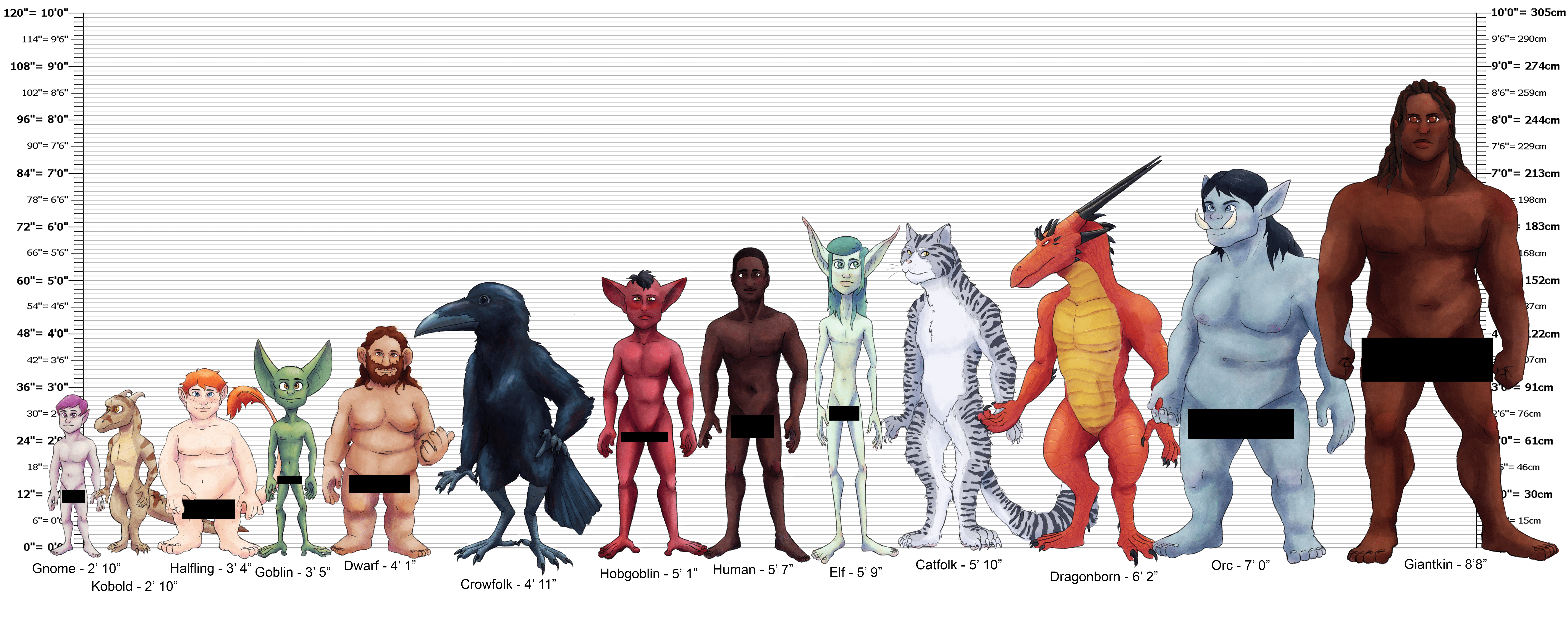Orc
Tall, physically mighty, and natural warriors, orcs are one of the strongest and most feared of the intelligent races of Ferlausen, although they are also one of the youngest races. Their powerful build and and sharp tusks clearly display their purpose and natural drive: to be soldiers in unstoppable hordes, clearing out any resistance they may find. Entire civilizations have been known to cower in fear at the thought of orcs knocking at their doors.
Orcs are one of the created races of Ferlausen, and can all trace their origins back to a single creator - an elf warlord called Huidon the Slayer.
Huidon was a powerful mage, who had been exposed to a portal to the Feywild in his mother's womb, and so was gifted with natural magic from birth. He rose to prominence as a political leader, rallying the members of his enclave to war in 2243 PAC. In order to create the perfect soldiers for his war, he selected the very best of his chosen warriors to undergo dark rituals which magically transformed their bodies into more bestial shapes. These transfigured elves were the very first orcs. In Huidon's language, the word "orc" means "boar," reflecting their boar-like tusks.
Despite their originally small numbers, orcs were quick breeders, and Huidon soon used his orc hordes to enslave much of the surrounding territory. Although he was defeated and killed in 2567 PAC, the orcs were not destroyed, but fled, spreading across the world and migrating to nearly every continent in Ferlausen.
Orcs have their fearsome reputation for good reason - they are natural soldiers, with quick tempers and a hunter's instincts. However, when not organized by outside forces or attacked by other races, most orc tribes are content to leave others well alone. It is only when others encroach upon territory they view as theirs that bloodshed occurs.
Basic Information
Anatomy
Orcs are famous for their sharp tusks, modified canine teeth that curve outward and upward, generally protruding from the sides of their mouths. Nearly all orcs have two pairs of tusks, one in the upper jaw and one in the lower jaw, although the lower tusks are much smaller and may be hidden by the lips, especially in female orcs. Tusks grow throughout an orc's life, and if broken off they will continue to grow. Older adult orcs may have impressively large curving structures that very nearly brush their foreheads, while young orcs' tusks may not be visible until they reach five or six years of age.
Although male and female orcs stand about the same height and have similarly powerful builds, male orcs usually have significantly longer and more impressive tusks than females. Female orcs, like their elvish forebears, generally do not have very large breasts except in late pregnancy or while nursing.
Genetics and Reproduction
Orcs are frequent breeders, with an average gestation period of only three months and a natural tendency toward multiple births. Fully 50% of orc births are twins, 15% are triplets, and a further 7% are multiple births higher than three. Because of this, orcs are one of the fastest-growing races in Ferlausen, which explains their rapid spread across the globe in the approximately 800 years since their first creation.
Orcs reach sexual maturity at about 12 years of age, and the oldest live to be about 65 years old.
Additional Information
Social Structure
When not brought together into large conquering hordes, orcs generally live quite spread out in small family groups. A traditional band of orcs usually consists of a single matriarch, her sisters, their adult female offspring, all their young children, and the adult male lovers of the women of the band. Young orc men, after reaching adulthood, generally leave their mother's band and seek out another. While seeking out future bands, sometimes orc men form bachelor groups, consisting entirely of adult men traveling and hunting together.
Civilization and Culture
Interspecies Relations and Assumptions
Orcs are hated and feared by the vast majority of other races, viewed as violent and bloodthirsty monsters, that are usually first introduced to a new culture as members of a foreign invading army. Few cultures recognize orcs as citizens, and even fewer recognize them as legitimate people - in some parts of the world, bounties are offered on orc tusks or scalps. However, whenever a warring country needs an influx of soldiers, they often conscript orcs into the ranks of their armies.
In particular, most elves view orcs as their greatest shame, and very few elves will tolerate the presence of orcs for long. Some elves still alive today were present when Huidon the Slayer first created the orcs, and a few of these feel personally responsible for his transgressions. Those elves that feel that responsibility sometimes hunt down and kill any orc tribes they can find, while others explore magical means of curing the orcish "corruption" and transforming them back into elves.
For their part, orcs are generally content to leave other species alone - however, as a nomadic people who hold very wide territories, they often clash with civilizations whose predetermined boundaries overlap with the places that orcs have chosen to call their own.
Despite this fear and general mistrust, there are a fair number of half-orcs, especially in places where orcs are frequently used as soldiers, such as the Scipien Empire. Half-orcs are almost exclusively the offspring of humans and orcs - although a half-elf, half-orc hybrid is theoretically possible, elves hate orcs so deeply that there are no documented cases of such a hybrid existing.
However, there are a few instances of interbreeding between half-elves and half-orcs, which reinforces the theory that orcs and elves would potentially be capable of producing fertile offspring. It is unknown whether any full-blooded orcs have ever produced offspring with half-elves.



Comments